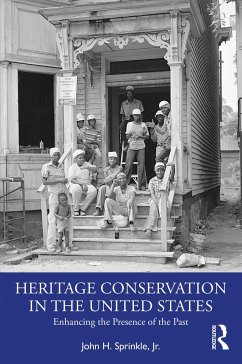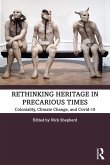Heritage Conservation in the United States begins to trace the growth of the American historic preservation movement over the last 50 years, viewed from the context of the civil rights and environmental movements.
The first generation of the New Preservation (1966-1991) was characterized by the establishment of the bureaucratic structures that continue to shape the practice of heritage conservation in the United States. The National Register of Historic Places began with less than a thousand historic properties and grew to over 50,000 listings. Official recognition programs expanded, causing sites that would never have been considered as either significant or physically representative in 1966 now being regularly considered as part of a historic preservation planning process. The book uses the story of how sites associated with African American history came to be officially recognized and valued, and how that process challenged the conventions and criteria that governedAmerican preservation practice.
This book is designed for the historic preservation community and students engaged in the study of historic preservation.
The first generation of the New Preservation (1966-1991) was characterized by the establishment of the bureaucratic structures that continue to shape the practice of heritage conservation in the United States. The National Register of Historic Places began with less than a thousand historic properties and grew to over 50,000 listings. Official recognition programs expanded, causing sites that would never have been considered as either significant or physically representative in 1966 now being regularly considered as part of a historic preservation planning process. The book uses the story of how sites associated with African American history came to be officially recognized and valued, and how that process challenged the conventions and criteria that governedAmerican preservation practice.
This book is designed for the historic preservation community and students engaged in the study of historic preservation.
This outstanding book speaks eloquently and powerfully to an ongoing and important challenge which underscores that, on this noble journey we call historic preservation, our efforts must reflect the "Face of America." Dr. Sprinkle emphasizes that, if we are to be fully successful in our preservation efforts, we must be true to history and include a recognition of the contributions of all cultures in the development of our nation. A must read for all those who care for the preservation of our diverse and rich collective heritage.
Robert G. Stanton, 15th Director of the National Park Service
As the historic preservation movement stands at yet another inflection point, John Sprinkle takes us back to the second generation of practitioners who stood within a formalized system of heritage conservation. He documents the intersections (and contradictions therein) between the preservation movement and the modern fight for Civil Rights. This book promises to serve as a self-reflection, and much needed context, for a field looking to re-evaluate the very systems codified by the New Preservationists of the 1960s, 70s, and 80s.
Priya Chhaya, Public Historian
Robert G. Stanton, 15th Director of the National Park Service
As the historic preservation movement stands at yet another inflection point, John Sprinkle takes us back to the second generation of practitioners who stood within a formalized system of heritage conservation. He documents the intersections (and contradictions therein) between the preservation movement and the modern fight for Civil Rights. This book promises to serve as a self-reflection, and much needed context, for a field looking to re-evaluate the very systems codified by the New Preservationists of the 1960s, 70s, and 80s.
Priya Chhaya, Public Historian








